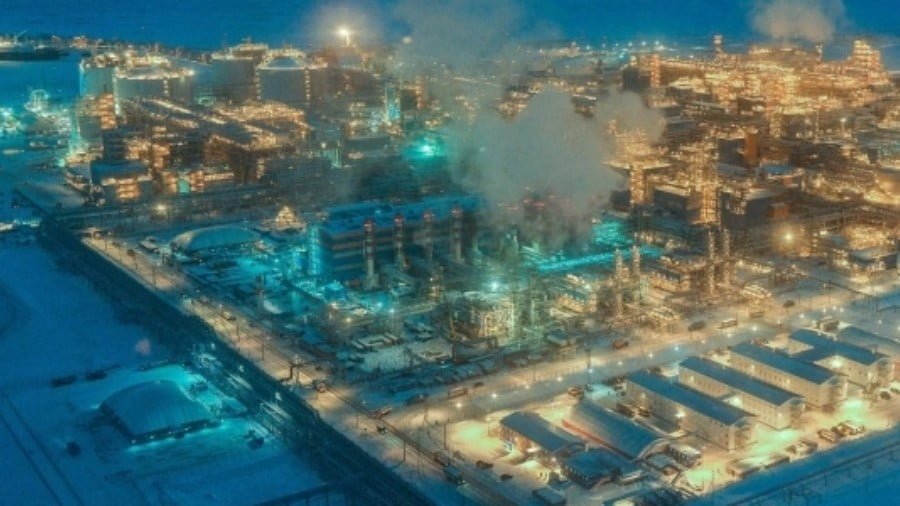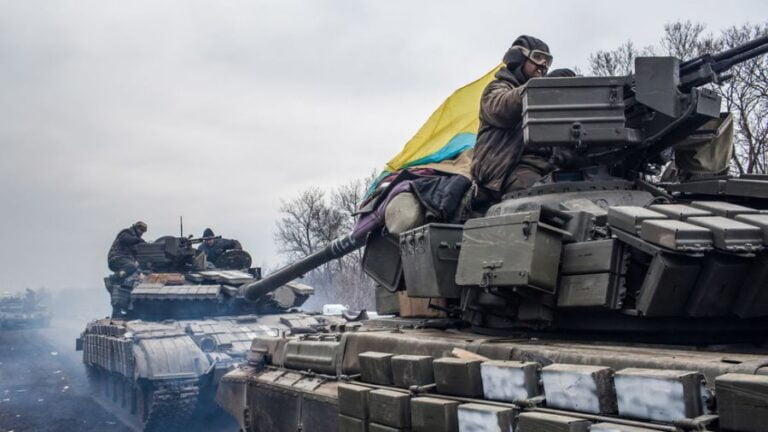A Fleet of Ice-Breaking Tankers to Launch Russia as a LNG Superpower
A mere two years ago Russia had just one LNG project and one could rarely read about it in media outlets. With Yamal LNG, however, that has now changed completely, with a whole plethora of energy analysts in awe as NOVATEK’s project defies expectations. The project has achieved something that is entirely at odds with the current business climate in Russia – it delivered results ahead of schedule.
With the 2nd train of Yamal LNG commissioned 6 months ahead of schedule this August and production coming along nicely, NOVATEK has tackled all logistics-related issues that have come up. As a result, Russia will have two LNG transshipment terminals at the eastern and western gate of the Arctic Ocean and a new Russo-Norwegian transshipment agreement to catalyze deliveries until the latter two are commissioned.
The first transshipment terminal to be discussed by NOVATEK and its partners was the 20 mtpa Kamchatka LNG, located at the Bechevinskaya harbor approximately 100 kilometers from the region’s main city, Petropavlovsk-Kamchatskiy. Ice-breaking LNG carriers would take the Yamal LNG and (from 2022 onwards) Arctic LNG-2 volumes from the port of Sabetta along the Northern Sea Route to Kamchatka, from where LNG would be shipped further on using regular carriers.
The primary aim is to save on transportation costs – by doing so, NOVATEK would save roughly 10% of its 2-2.5 USD/MMBtu transportation expense. The second, more subtle, underlying reason is that NOVATEK sees both Yamal LNG and Arctic LNG-2 as a year-round export outlet, nullifying the effects of the frozen Arctic seas during the icy season (November-April).
As with Yamal LNG itself, the government will provide financial support for the endeavor – of the $1.6 billion (108 billion RUB) total costs, Kremlin would provide $0.6 billion. The reason for this is Kamchatka’s remote location – with no significant hydrocarbon production of its own, the transshipment terminal would also be used to supply Kamchatka with natural gas. The terminal would use two floating storage units, both with a nominal capacity of 400,000 m3.
It should come as no surprise that the Kamchatka LNG has generated substantial interest in Japan – both the shipping company Mitsui and trading firm Marubeni expressed their interest in joining the project. With the Asian part of its transshipment drive more or less solved, NOVATEK then took on the Europe-headed deliveries.
The result that came out of it was by no means original – NOVATEK decided to build a similar transshipment terminal with the same nominal capacity of 20 mtpa in the Ura bay, some 50km from Murmansk. Located in an ice-free bay, the Murmansk LNG transshipment terminal is fully suitable for NOVATEK’s year-round shipping plans.
Its commissioning is most likely to take place in 2022-2023, by that time all four trains of the 17.5 mtpa Yamal LNG project will be already in full swing, it is rather additional LNG cargoes from the 19.8 mtpa Arctic LNG-2 that would stretch the current system in the extreme.
In a departure from the Kamchatka LNG, there is one additional complication to it – since the Murmansk area is home to Russia’s Northern Fleet and many other military objects, NOVATEK needs the military’s approval to base its terminal at the proposed location.
Until the Murmansk LNG comes into operation in 2022-2023, NOVATEK will rely for the next years on Norwegian transshipment capacities. The company has already inked a 3-year deal with Norway, which would shorten the usual return trip by 5-6 days – heretofore the Belgian transshipment terminal in Zeebrugge was the primary one if transshipment was deemed necessary.
It took 20 days approximately for Russian Arc7 class tankers to reach Zeebrugge from Sabetta and sail back, with the Norwegian option the trip length would be reduced to a mere 5 days.
At the same time – perhaps boosted by the 61% y-o-y profit increase in Q2 2018 – NOVATEK also took measures to create an ice-breaking fleet of its own, in addition to the 15 the company will use for Yamal LNG supplies (currently it uses 7, the Korean-built fleet should be complete by 2019).
To deal with LNG output staying above Yamal LNG’s nameplate capacity and the reshaping of production schedules due to earlier-than-expected commissioning dates, as well as to satisfy increased shipping needs, the fleet of LNG carriers sweeping the Arctic Seas should be extended.
The Russian Prime Minister D. Medvedev stated at a government meeting that 10 more ice-breaking LNG carriers would be needed to accommodate increased shipping rates.
Here, too, NOVATEK has come up with a novelty idea, forming a joint venture with nuclear powerhouse Rosatom to develop an LNG-fuelled icebreaker fleet. It remains to be seen whether the new LNG-fuelled tankers would be built abroad or in Russia (the latter is more likely now that Rosneft and Gazprombank have edged ever-closer to the commissioning of the Zvezda shipyard in Russia’s Far East).
In a twist of events that is rather uncharacteristic of Russia, NOVATEK has found itself in the forefront of Russia’s LNG ambitions. More than that – it continues to initiate new projects, be it Arctic LNG-2 or transshipment terminals in Murmansk and Kamchatka, that attract foreign investment under circumstances when foreign investment into Russia’s energy sector is very limited.
If it manages to bring the fourth train of Yamal LNG (nameplate capacity of 0.9 mtpa) online without delays and using the company’s proprietary liquefaction technology called “Arctic Cascade”, it would amount to a small earthquake within Russia’s quite risk-averse energy sector.







